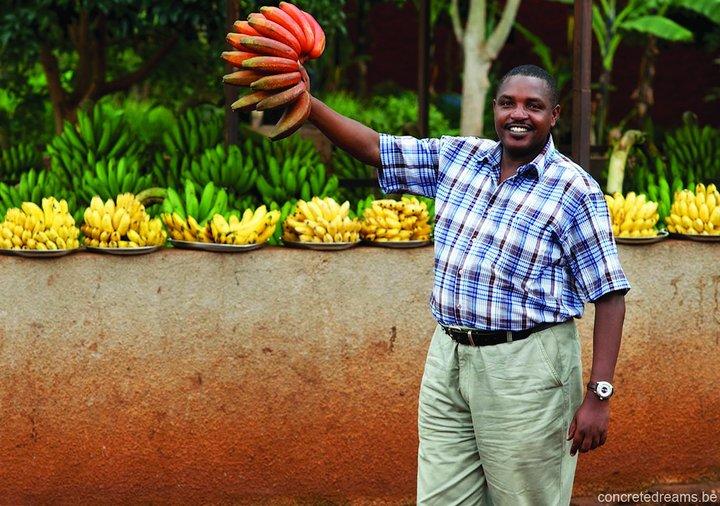Preventing micronutrient deficiencies through vitamin A-rich bananas

Vitamin A deficiency is the leading cause of acquired blindness in children and increased mortality from diarrhoeal diseases. Find out how Vitamin A-rich bananas can help in this 2013 Annual Report story.
Vitamin A deficiency is a common nutrition problem throughout the world, and severe deficiency is the leading cause of acquired blindness in children and increased mortality from diarrhoeal diseases. Bananas could hold the key to preventing vitamin A deficiency in places where they are consumed as a staple food.
Studies on vitamin A-rich banana varieties from the Pacific show that eating just one banana a day can provide the entire requirement of provitamin A carotenoids – the precursors used by the body to produce vitamin A.
To date, we have screened more than 400 banana cultivars for elevated nutrient content, and 12 cultivars show promise for their content of provitamin A carotenoids. These varieties, originally from the Pacific, are now undergoing trials in Eastern Africa to see how they perform under different agroecological conditions, both to measure their nutrient content at different stages of ripening and to see if local communities will accept them as part of their diet.
The trials have shown that five of the cultivars have great variability in provitamin A content across the different growing conditions. When ripe and raw, the selected cultivars have significantly higher levels of vitamin A than other varieties. Importantly, six out of nine cultivars are able to meet more than the daily recommended vitamin A content for children aged 1–3 years – a level similar to that of Pacific cultivars.
Testing for acceptability of the cultivars involves groups of equal numbers of men and women trying different recipes to create local dishes. Dishes are scored using various attributes such as taste, aroma and appearance. So far, six new nutrient-rich cultivars have been rated as equal to or better than local varieties, with five new cultivars planned to be officially released in Burundi and the Democratic Republic of the Congo next year.
This story was featured in our 2013 Annual Report.
Read the Annual Report here
This research contributes to the CGIAR Research Program on Agriculture for Nutrition and Health and the CGIAR Research Program on Roots, Tubers and Bananas.
Photo: Diverse banana varieties for sale in Uganda. Credit: concretedreams.be, courtesy of Musarama
